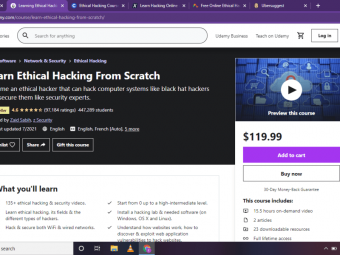Plc Programming Learn The Basics With Codesys
Tags: PLC
This course will provide anyone with the basic knowledge and tools to write PLC applications and software from scratch
Last updated 2022-01-10 | 4.4
- You will learn what a PLC is- how it works and all its internal mechanisms
- You will be able to write PLC software and applications on your own and to start your career in industrial automation
- You will learn all the characteristics and definitions of the IEC 61131-3 standard
What you'll learn
* Requirements
* There are no mandatory requirements for this course. A basic knowledge of electronics and computer science may help you* but a technical mentality and a desire to learn is all you need for this course.
* It is not necessary to have a physical PLC
* or to have software already installed on your PC.
Description
This course will allow anyone to learn the basics on how to program a PLC.
It is not necessary to have any previous experience because all the concepts will be clearly explained from the basics.
We will use CoDeSys, a development environment to write our PLC programs and we will use its simulation functionality to interact with processes and applications without the actual need of a real PLC.
At the end of the course you will be able to write your PLC applications and software and to apply automation programming patterns to write quality code.
This knowledge will allow you to pursue different careers in the industrial automation field.
Who this course is for:
- Anyone who has the desire to learn how to develop software for PLC or who wants to pursue a career in industrial automation.
Course content
6 sections • 32 lectures








 This course includes:
This course includes:
![Flutter & Dart - The Complete Guide [2022 Edition]](https://img-c.udemycdn.com/course/100x100/1708340_7108_5.jpg)















